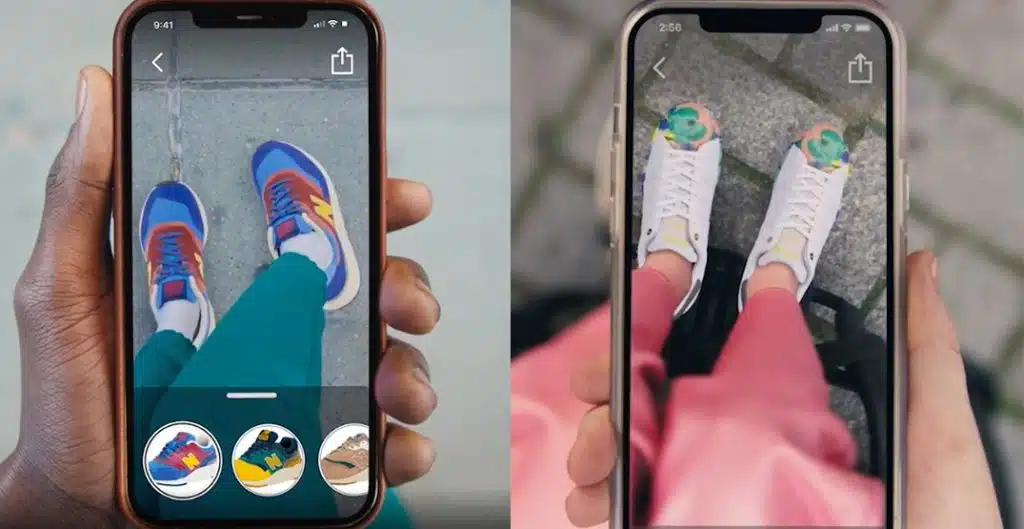For companies seeking to create effective fashion marketing campaigns these days, there’s no question that compelling digital content is key. When people browse online, they’re usually after quality material such as insightful blog posts, a stunning collection of photographs, or video footage that delivers a particular message to viewers. In the past couple of years, fashion has increasingly embraced digital advertising, particularly the interactive model, with 88% of marketers saying at least 10% of their static content will be made interactive in the next two years. Here’s how you can make this option work for your fashion products
The Rise of Interactive Digital Advertising
The media industry is bouncing back with gusto after the COVID-19 pandemic. A 2022 Advertising Expenditure Forecast shows global ad spending rose by 15.6% in 2021. Digital advertising is expected to comprise 60% of that total by the end of this year as consumers spend longer online. The rise in interactive ad formats, in particular, shows notable acceleration, now accounting for almost 40% of all display expenditure. We expect ongoing improvements in video quality and clear user demand to continue driving this trend.
The Success of Interactive Content Marketing
Interactive marketing is proving ultra-successful, according to engagement data by intelligence firm Mediafly. A review of data from more than 160,000 shares across 99 platforms during the past two years shows that consumption and sharing of digital content have increased by 207% over two years ago. Respondents who leveraged interactive content experienced 94% more content views than those leveraging traditional, static content. This shows interactive advertising is really coming into its own, and nowhere is this more evident than in the fashion industry.
Using Interactive Advertising in Fashion
Some of the ways companies are using interactive digital advertising in fashion include virtual fashion play, non-fungible tokens (NFTs), and gamification. According to McKinsey’s State of Fashion 2022 report, online business models are flourishing. Hyper-interactive digital environments and e-commerce are pushing fashion frontiers, and marketers are seeking fresh approaches to online creativity.

1. Interactive Video Ads
Advertisers can now use programmatic advertising to show personalized interactive videos to followers. The footage might deliver a sneak peek at a new fashion line or a special promo item. It’s can be addressed directly to the viewer and customized to their preferences, size, and style based on first-party data. Consumers can mix and match outfits for comprehensive styling ideas, and get a special discount code to use for purchases made after viewing. Video advertising could also include an extra discount or freebie in exchange for sharing the video or introducing a friend.

2. Virtual Try-Ons
Since Snapchat launched its augmented reality (AR), Catalog-powered Shopping Lenses in early 2021, more than 250 million people have used the feature more than 5 billion times. This AR functionality allows users to interact with, try on (and purchase!) multiple products virtually. The company claims that participating businesses are finding Shopping Lenses drive scale, efficiency, and performance for their key conversion KPIs. The tool enables brands to create three-dimensional, photorealistic versions of their products, which consumers can try on using smartphone apps.
3. Interactive Digital Tours
From real estate marketing to event management, digital tours are getting a good rap. By including this option in their fashion marketing, companies can create an experience where visitors feel like they are physically present in a venue. They can select from a number of pre-defined routes on their device, and during the tour they can choose to:
- follow signage to view specific collections,
- hear from the fashion designer about new lines,
- see or try on latest fashion items using 3D simulation options,
- watch snippets of a recent fashion show featuring items they are interested in,
- participate in games and quizzes to win prizes or discounts,
- add products to their baskets,
- read reviews about the items on social media, and
- check out seamlessly when they reach the end of the tour.
For local companies, a virtual tour of their store could entice visitors to visit the premises in real life, once they know their way around and have seen the sort of merchandise it contains. And by aggregating the campaign across their social media profiles, marketers can increase awareness and reach.

The Benefits of Programmatic Advertising
Managing this kind of digital marketing for fashion brands can be a daunting challenge, especially when advertisers consider how many moving parts are involved in an interactive digital fashion campaign. Programmatic ad buying offers a solution to part of the equation. Using this method, marketers can target the right audience based on very specific data, and buy ads per impression. The automated process guarantees adspend efficiency that would be impossible to achieve with traditional media buying methods.
Implementation Across Omnichannel Campaigns
Interactive advertising is transforming fashion marketing through omnichannel implementation. This is a cross-channel content strategy aimed at improving the customer experience and driving better relationships across all touchpoints. These include traditional and digital channels, point-of-sale, physical, and online experiences.
It’s easy to create interactive point-of-sale and physical experiences but until recently the digital component was absent. That’s no longer the case. The impact of digital marketing on the fashion industry is creating an exciting new future that opens multiple doors for marketers to reach their target audience.
Promote and engage consumers. This marketing tactic engages consumers in a live setting and encourages them to interact directly with the brand.
How Experiential Marketing Differs from Activation Marketing
Experiential marketing uses activities that any consumer can participate in to sell products. At first, this sounds much like brand activation. However, in brand activation, the goal is specifically to show that the brand can be trusted and the marketing messages are true.

